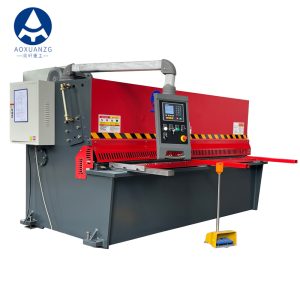Introduction
Understanding the fundamental differences between cutting and shearing is crucial in many fields, including manufacturing, metallurgy, and materials science. These two processes, while seemingly similar, have unique characteristics and applications that set them apart. This article aims to elucidate the differences between cutting and shearing, providing a comprehensive understanding of these two essential material manipulation techniques.

Cutting: Definition and Characteristics
Cutting is a versatile process used across multiple industries. It involves removing material by applying a force that exceeds the material’s shear strength, causing it to separate. The cutting process can be performed by various tools and machines, such as saws, lasers, and plasma torches.
The defining characteristic of cutting is its precision. Cutting removes material along a specific path dictated by the tool or machine, enabling intricate designs and shapes. This precision is beneficial in industries such as electronics, where components need to be cut to exact dimensions.
However, cutting often produces a significant amount of waste material and can cause wear and tear on the tools used. The process also generates heat, which may affect the material’s properties and requires cooling mechanisms to mitigate.
Shearing: Definition and Characteristics
Shearing, on the other hand, is a process that deforms a material until it breaks or separates. The shear force is applied parallel to the material surface, causing the material to yield and separate along the shear plane. Common tools used for shearing include shears, punches, and dies.
One primary advantage of shearing over cutting is its efficiency. Shearing can process large amounts of material quickly and with minimal waste, making it ideal for industries such as construction and metal fabrication. The shearing process also generates less heat than cutting, reducing the need for cooling mechanisms.
However, shearing lacks the precision of cutting. The deformation caused by shearing can lead to uneven edges or distortions in the material, which may not be acceptable in industries requiring high precision.
Comparison and Conclusion
In summary, while both cutting and shearing are methods of material manipulation, they have distinct differences. Cutting is characterized by its precision and ability to create complex shapes but generates heat and waste. Conversely, shearing is efficient and produces less waste and heat but lacks the precision of cutting.
Understanding these differences is crucial in choosing the right process for a particular application. It allows for optimization of resources, time, and quality of output, ensuring that the chosen method aligns with the specific requirements.

